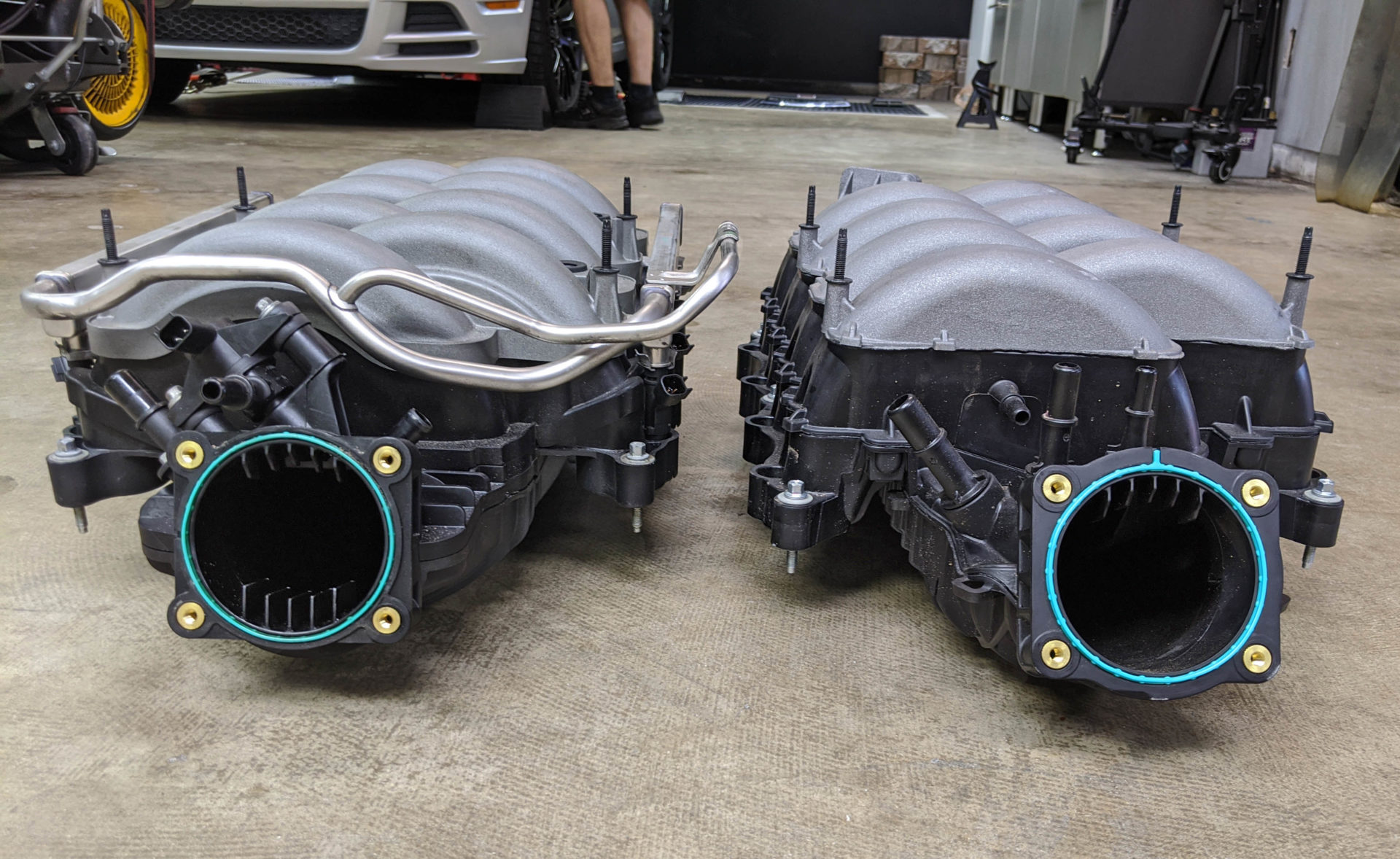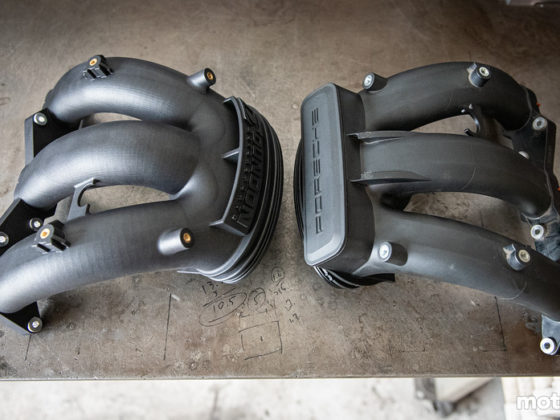
We started off by removing the lid and intake tube of our factory airbox. The long plastic tube that connected to the intake and seems out of place in the engine bay, is the factory sound tube.

The sound tube connects the car’s intake to inside the cabin of the car. This makes the car sound sportier to the driver without making the car louder externally. All Coyote-powered Mustangs are way too quiet, except the newer cars with the optional active exhaust. We found this to be a problem in our 2016 Mustang GT and 2018 Mustang GT and fixed them with Borla exhausts. For this project, we are ditching the ugly sound tube and are upgrading the exhaust to solve the sound problem.

With the sound tube removed, we plugged the exposed hole with the K&N provided plug.

The K&N Race Intake has a larger and smoother intake tube than the factory corrugated tube. The K&N cone air filter has significantly more surface area compared to the stock panel filter.

The K&N cone filter just barely fits inside the enclosed housing. The housing bolts right into the factory airbox mounting location.

The diameter of the K&N intake is larger than stock and requires a tune, especially to take full advantage of the increased diameter. We didn’t want to optimize custom tunes for every component tested, so we just changed the Manifold Air Flow scaling to match the larger K&N tube rather than do a proper “tune”. This left power on the table but maintains consistency to show us the fundamental difference the new intake makes.
Quick Reference:
Page 1 – Baseline Dyno
Page 2 – K&N Performance Air Intake System
Page 3 – K&N Intake Install
Page 4 – K&N Intake Dyno & 2018+ Intake Manifold
Page 5 – 2018+ Intake Manifold CMCV Delete and Stock Manifold Removal
Page 6 – Stock Gen 1 vs Gen 3 (2018+) Manifold Comparison
Page 7 – 2018+ Manifold Install
Page 8 – 2018+ Manifold Dyno & Tune




10 comments
Would it make sense to attempt a bit of port matching to accommodate for the larger ports on the manifold. It doesn’t appear to be a huge difference, but hitting that hard edge on the heads is definitely disturbing air flow.
I guess the big unanswered question is would the same tune time get you 400hp with the old manifold minus the torque loss. Doubt you would get a peak that matches, but the area under the curve might be more useful on a track car.
Stay tuned for Part 3 where we answer that question.
and here I was all excited to read about panhard bar benefits over watts link…
Stay tuned for the article that tackles the suspension.
Love it.
Awesome testing! Based on what I saw on Project S2000 with testing of the airbox lid on vs off, I mean, you and I know you’ll see similar on the Mustang. But it’s always great to see the real data, so I’m excited to see it! I always love seeing the data you present.
As much of a Mustang fan as I am, certainly a 4th gen F-body with a cam and exhaust is a cheaper ticket to 400whp.
I just looked into it and it doesn’t seem like a cam and exhaust can make 400whp on an F-body. Even if it does, this is “Budget 400whp TRACK CAR” and it would cost far more to make an F-body competent on road courses 😉
Great information,I can’t wait to see the third article.